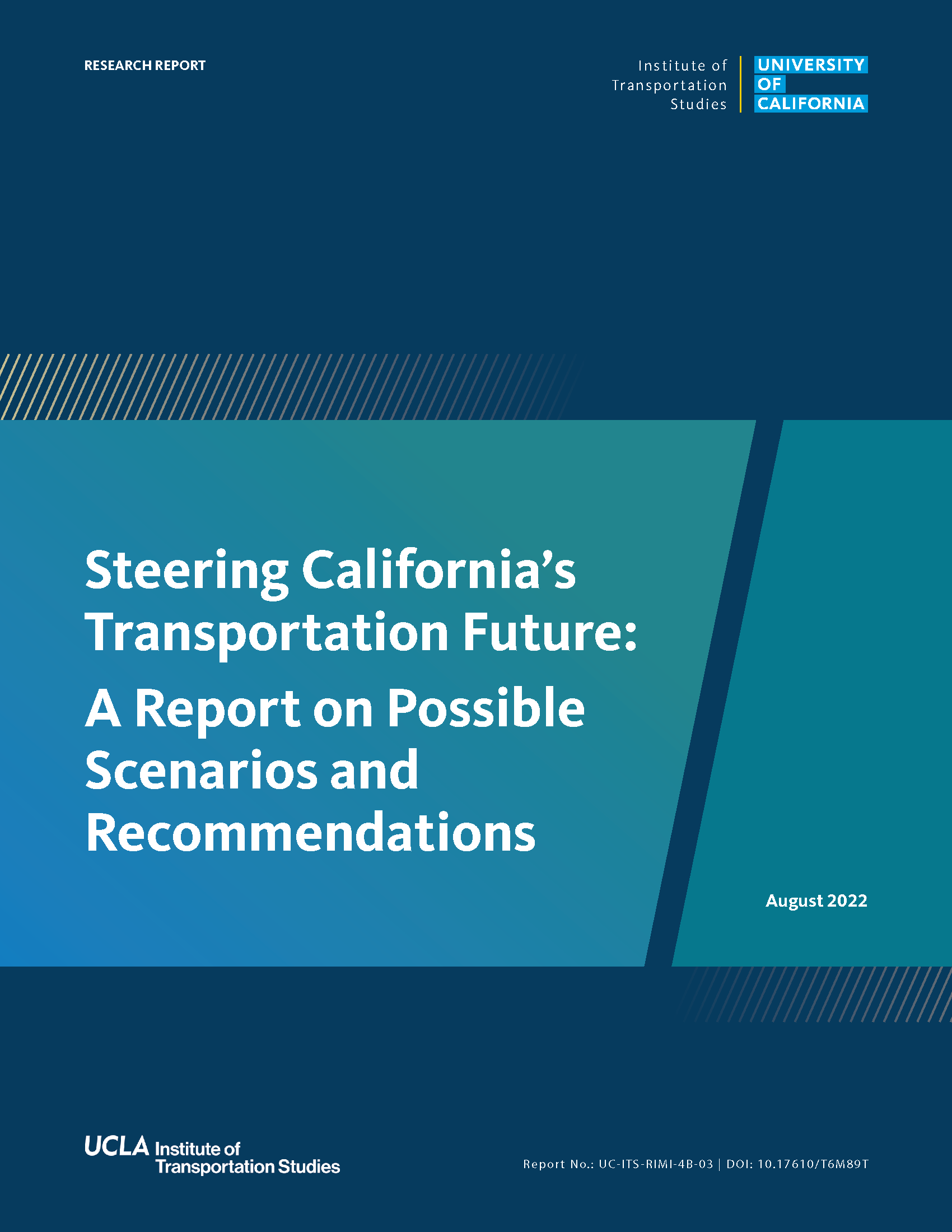Date: August 2, 2022
Author(s): John Gahbauer, Juan Matute, Jacob L. Wasserman, Alejandra Rios, Brian D. Taylor
Abstract
To investigate possible future transportation and land use scenarios for California as well as their likely precipitating policies and potential consequences, we convened a panel of 18 experts and used a novel variation of the Delphi method to systematically explore four specific scenarios and probe the desirability and likelihood of each. The scenario that panel members collectively thought most desirable for California (one with diverse transportation options and higher-density development) was also the one they thought least likely to materialize by 2050. This report describes the findings of the three surveys and two meetings that our method entailed and summarizes some of the discussion among panelists. We include reflections on the salient but unexpected finding that panelists viewed trust in government as both critical to effecting the scenario they considered most desirable and also lacking to such an extent that pursuing that desirable outcome could cause unintended consequences or outright failure. Accordingly, we discuss possible implications and outline policy recommendations for improving both processes and conditions that can instill in California’s government more trust, without which a future of multimodal transportation and higher-density, mixed land uses is unlikely to succeed.
About the Project
While the COVID-19 pandemic caused ridership on public transit and shared mobility to drop precipitously and put severe strain on their finances and operations, all was far from well prior to the pandemic. Transit ridership had dropped across the state in the half-decade prior to the pandemic, despite increasing public investment, and the relationship between shared mobility and regulators was oft-disputed. Thus, looking during and beyond the recovery from the pandemic, this project seeks to answer the question: what is and should be the future role and structure of public transit and public shared mobility in California?


